TABLE 15-5
What are the factors that determine the acceleration time (in sec.) from 0 to 60 miles per hour of a car? Data on the following variables for 171 different vehicle models were collected:
Accel Time: Acceleration time in sec.
Cargo Vol: Cargo volume in cu. ft.
HP: Horsepower
MPG: Miles per gallon
SUV: 1 if the vehicle model is an SUV with Coupe as the base when SUV and Sedan are both 0
Sedan: 1 if the vehicle model is a sedan with Coupe as the base when SUV and Sedan are both 0
The regression results using acceleration time as the dependent variable and the remaining variables as the independent variables are presented below.
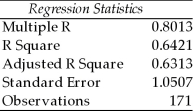 ANOVA
ANOVA

 The various residual plots are as shown below.
The various residual plots are as shown below.
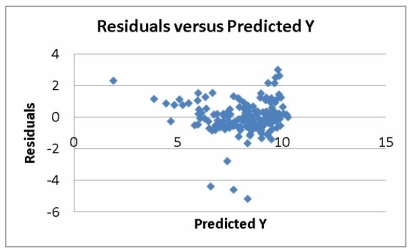
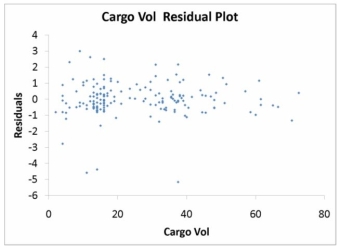
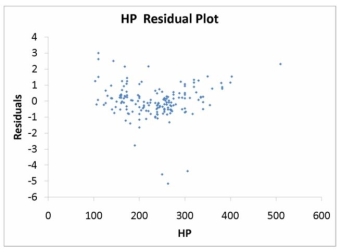
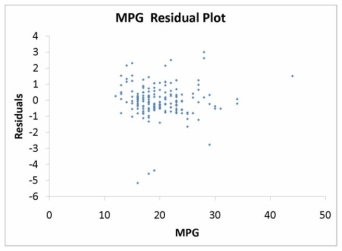
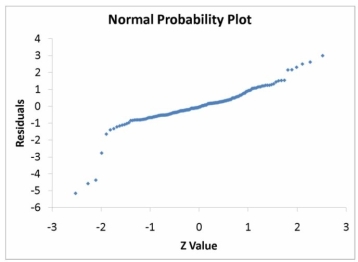 The coefficient of partial determination (
The coefficient of partial determination (  ) of each of the 5 predictors are, respectively, 0.0380, 0.4376, 0.0248, 0.0188, and 0.0312.
) of each of the 5 predictors are, respectively, 0.0380, 0.4376, 0.0248, 0.0188, and 0.0312.
The coefficient of multiple determination for the regression model using each of the 5 variables as the dependent variable and all other X variables as independent variables (  ) are, respectively, 0.7461, 0.5676, 0.6764, 0.8582, 0.6632.
) are, respectively, 0.7461, 0.5676, 0.6764, 0.8582, 0.6632.
-Referring to Table 15-5, ________ of the variation in Accel Time can be explained by MPG while controlling for the other independent variables.
Definitions:
Vertical Merger
A merger between two companies that operate at different levels in the production process of the same industry.
Small Business
An independently owned and operated company that is limited in size and revenue, depending on the industry.
Direct SBA Loans
Loans provided directly by the Small Business Administration to small businesses that meet certain qualifications.
Natural Disaster
A sudden and devastating event in nature, such as a hurricane, flood, or earthquake, that causes significant damage or loss.
Q2: Referring to Table 13-11, what are, respectively,
Q19: Which of the following statements about quorum
Q25: Referring to Table 15-1, what is the
Q46: Referring to Table 13-3, suppose the director
Q93: In testing the difference between two proportions
Q98: In stepwise regression, an independent variable is
Q104: Referring to Table 14-7, the department head
Q128: Referring to Table 14-8, the analyst wants
Q209: Referring to Table 14-7, the department head
Q213: Referring to Table 14-15, what is the